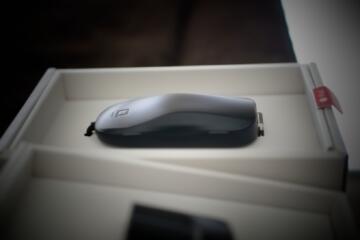Securing Smart Cars: Defending Against Modern Auto Hacking
Welcome to the future, where your car is as connected as your smartphone! But before you indulge in visions of streaming Netflix on your dashboard during a traffic jam, let’s zoom into a crucial topic—securing your smart car against the wizardry of modern auto hacking. Yes, your “roller” has some shiny tech bells and whistles, but these are not just for show; they present potential vulnerabilities that hackers love to tinker with. In this article, we’ll probe into the complexities of securing these technological marvels from cyber threats, while keeping you engrossed and maybe even a little entertained.
The Anatomy of a Smart Car
Smart cars today are miraculous machines, equipped with sensors, connectivity, and computational prowess that would make mid-20th-century sci-fi writers blush. However, it’s this connectivity – akin to Her Majesty’s Royal Postal Service for data packets – that opens up Pandora’s box. These cars employ a plethora of ECUs (Electronic Control Units), controlling everything from engine dynamics to smart cruise functionalities. You can consider them the brain cells of your car, except these neurons can be hijacked faster than your Wi-Fi at a crowded cafe.
So, why is it all Greek to many of us? Consider this piece by Viandel on network segmentations for smart cars: they detail how Electronic Control Units, or ECUs, connect using multiple communication protocols such as CAN (Controller Area Network) and FlexRay. Given the complexity, it’s perhaps not surprising that these ECUs even mystify tech-savvy users like our coffee shop hacker. However, this complexity also provides a sprawling attack surface, one that, according to a Synopsys study, is increasingly exploited as cars get more integrated.
Upping the Ante: Modern Auto Hacking Techniques
The first step in addressing any issue is acknowledging it exists. Let’s do some real talk—modern hackers are creative! What was once the domain of hypothetical discussion in basement forums has now crossed into the sunlight, with hackers proving it’s feasible—and laughably simple—to take over vehicle operations through multiple avenues. The 2015 Jeep Cherokee hack is ancient history by now, but it marked a watershed moment, igniting the industry’s awareness like a New Year’s firework display.
How do hackers access these systems? By injecting malicious code through compromised ECUs or exploiting vulnerabilities in entertainment systems that lack updated security. They can even access via key fobs—yes, those tiny gadgets that often double as mini-flashlight toys for kids. Check out this whitepaper by Kaspersky that dives into key fob vulnerabilities and offers some practical advice.
Security Measures: Playing Defense Like Your Data Depends On It
The comforting news is the automotive industry isn’t idling at a red light. Thanks to initiatives like the Automotive Cybersecurity Best Practices by NHTSA and manufacturers partnering with security tech firms like Synopsys, there’s been a push to defend against these emerging threats. Picture it this way: manufacturers are now crafting digital armor for your vehicle as ardently as medieval blacksmiths forging chainmail.
With modern security platforms, several layers of cybersecurity are employed. For instance, layer-based security builds multiple barriers ensuring malicious code remains trapped like the protagonist in a bad horror movie. This strategy entails encryption protocols, validation, and verification methods that ensure only authorized updates pass through a firm hardware door. The meat and potatoes of these defense techniques involve encryption standards like AES (Advanced Encryption Standard) for in-car communications and the use of FireEye threat intelligence systems to continuously monitor for oddities.
Recommendations: A Crackerjack Toolbox for Smart Car Security
For the proactive car owner, there are steps you can take to make your vehicle less appealing to hackers than a salad bar at a pizza party. One major tip is to use a RFID-blocking key fob pouch to thwart signal amplification attacks. Regularly updating your car’s software is another critical step. Much like your smartphone, lacking the latest security updates exposes your car to unnecessary risks.
An OBD-II lock is one nifty accessory worth considering. It blocks access to your vehicle’s diagnostic port, preventing any unauthorized tampering. Products like the VICLOCK OBD-II lock are great deterrents. Beyond gadgets, staying informed is an invaluable tool—subscribing to newsletters from credible automotive tech sources will keep you abreast of emerging threats and safeguards.
The Road Ahead: A Connected, But Cautiously Stitched Future
In the grand journey of integrating technology with transportation, smart cars represent both the delicate beauty of a spider’s web and its potential vulnerability. While auto hacking may seem like a labyrinthine subject, the core lesson is straightforward—defense requires vigilance and continuous advancement of security protocols. Smart cars will only get smarter and more connected, with smarter hackers trying to outwit these advances. The battle may appear Sisyphean at times, but automobile manufacturers, tech companies, and vigilant owners together can ensure our vehicles remain a source of pride rather than panic.
As you hit the open road, equipped with cutting-edge tech, rest easier knowing the nerd-world tirelessly works behind the scenes, ensuring your joy rides remain as safe as they are exhilarating. In closing, may your drives be smooth, your updates be frequent, and your RFID pouches be effective. Safe travels!
Discover more from Akiatech Solutions Blog
Subscribe to get the latest posts sent to your email.









